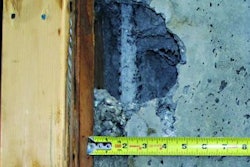Serving as leading indicators for the sector, two composite multifamily indices produced from NAHB's survey of multifamily builders and property managers showed improvement in the third quarter of 2010. The NAHB Multifamily Production Index (MPI) increased to a value of 35.6, up from the 26.6 level reported for the second quarter. This is the highest the MPI has been since 2007.
The NAHB Multifamily Vacancy Index (MVI), meanwhile, registered a decline (fewer vacant apartments) for the fifth quarter in a row--down to 39.2. The MVI has been declining steadily since reaching a peak of 70.2 in the second quarter of 2009.
The MPI is a weighted average of three seasonally-adjusted components based on respondents' ratings of starts currently vs. the previous quarter. All three MPI components increased in the third quarter: Lower rent apartments, rose to 45.7 from 32.8; Market-rate apartments rose to 38.6 from 34.4; and For-Sale units (condos and co-ops) rose to 23.5 from 14.5.
Similarly, the MVI is a weighted average of three seasonally-adjusted components based on respondents' ratings of vacancies currently vs. the previous quarter. MVI components for Class B and Class C apartments showed improvement (a reduction, indicating fewer vacant apartments) in the third quarter, while the MVI component for Class A apartments increased slightly.
Previously, NAHB had reported multifamily index components individually. Beginning with this quarter, the components are being combined into summary indices based on the ability of the series to predict US Census Bureau data one to three quarters ahead. For example, the Census Bureau's multifamily starts rate, after an extended decline, has been increasing since the fourth quarter of 2009. NAHB's MPI surged one quarter earlier. The Census Bureau's rental vacancy rate in buildings with five or more apartments has been generally declining since reaching a peak of 13.1 percent in the third quarter of 2009, a quarter after NAHB's MVI reached its peak.
"Since 1985, NAHB has been producing the Housing Market Index, which gives an indication of what the coming months will bring in the single-family market," said David Crowe, NAHB's Chief Economist. "We are confident that the MPI and MVI will provide equally useful information for the multifamily sector."
"It is important to remember that, although both the MPI and the Census Bureau's measures of multifamily production are increasing, they are rising from historically very low levels," Crowe added, "with multifamily starts remaining well below a rate that would be sustainable under more normal market conditions. Further improvement in multifamily production depends upon resolving the formidable problems that currently exist in accessing credit to develop and build economically viable multifamily projects."
For data tables on the MPI and MVI, visit www.nahb.org/mmi.
Copyright Targeted News Services
TNS mv45 101210-3143781 61MarlynVitin


















